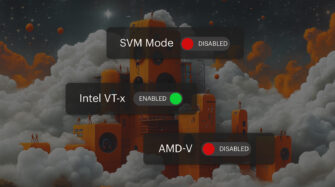Table of contents
Application whitelisting plays an important role in cybersecurity, particularly for managed service providers (MSPs).
By permitting only pre-approved applications to run, application whitelisting helps prevent malware, ransomware, and other unauthorized software from compromising client systems.
This guide outlines how application whitelisting works, how to implement it, and best practices for deployment.
What is application whitelisting?
Application whitelisting is the process of creating an approved list, often called a “whitelist” or “allow list,” that defines which software and executables are permitted to run on a system. In contrast, “application blacklisting” or “block listing” involves identifying known malicious programs and preventing them from executing. Since attackers constantly develop new malware variants, blacklisting can turn into a race to keep up, with new threats emerging faster than they can be identified and blocked.
Whitelisting helps protect client data and systems from malware. It also makes remote management and technical support more straightforward.
How application whitelisting works
Application whitelisting starts by creating a list of approved applications based on factors like file path, file hash, publisher certificate, or even process behavior. When a user (or automated script) attempts to launch an application, the system will check the whitelist. If the application matches an approved entry, it runs; otherwise, it is blocked.
Key mechanisms include:
- Static whitelisting: Administrators create a fixed list of approved executables and libraries. Static whitelisting can be slow to adapt if applications or approved processes change frequently.
- Dynamic whitelisting: The approved list automatically updates based on defined rulesets. For instance, a dynamic policy might allow any software signed by a trusted certificate authority or installed via a vetted deployment tool.
- Digital signatures and certificates: Many whitelisting solutions require code-signing certificates from trusted authorities to ensure that only software from known and trusted vendors can run.
MSPs often combine static and dynamic elements to ensure legitimate software updates and emergency patches are allowed through. An overly restrictive allow list can inadvertently block legitimate apps and updates.
Key technical components of whitelisting
- Software and tools: Microsoft AppLocker is a popular choice for creating whitelists in Windows environments. Alternative solutions (e.g., Symantec Endpoint Protection, VMware Carbon Black) may offer added reporting or integration benefits.
- Integration with operating systems: Group Policy settings can ensure consistent whitelisting across numerous endpoints.
Implementation strategy for MSPs
Here’s how to plan and implement a whitelisting strategy:
Assess client needs
- Infrastructure inventory: Catalog OS versions, endpoints, and third-party applications.
- Security maturity: Evaluate the client’s existing antivirus or intrusion detection technology.
- User roles and privileges: Identify which users might need broader privileges (e.g., IT managers) vs. stricter controls (e.g., front-line employees).
Evaluate compliance requirements:
- Determine whether application whitelisting needs to account for client regulatory requirements, such as:
- General Data Protection Regulation (GDPR): GDPR requires enhanced protections for personal data.
- Payment Card Industry Data Security Standard (PCI-DSS): In e-commerce and finance, application whitelisting can address requirements for protecting customer financial data.
- Health Insurance Portability and Accountability Act (HIPAA): In healthcare, ensuring that only approved software can access or process patient data helps maintain strict privacy controls.
- National Institute of Standards and Technology (NIST) framework: NIST limits unauthorized software as part of its broader cybersecurity guidelines.
Develop a whitelisting plan
- Define specific security goals, such as reducing zero-day vulnerability exposure or enhancing regulatory compliance.
- When possible, consider dynamic authorizations for certain business-critical processes.
- Develop a small-scale pilot environment to manage remote access setups or cloud-based endpoints.
- Determine metrics for success (e.g., frequency of whitelisting-related support tickets, reduction in malware incidents, improved compliance scores).
Define the deployment process
- Create and document policies. Draft explicit policies that define roles, responsibilities, and processes.
- Train users. Provide end users with instructions on how to request new software approvals and report blocked applications.
- Scale up. Scale the configuration to all relevant clients and endpoints.
How to create effective whitelisting policies
- Maintain detailed documentation. Track every rule, its purpose, and the date it was implemented. This documentation streamlines audits, troubleshooting, and policy updates.
- Maintain the least privilege principle. Adopt zero-trust account privileges to minimize insider threat risks.
- Conduct regular policy reviews. Review whitelisting policies at least quarterly to update rules, add new legitimate applications, and remove outdated ones.
- Set an exception-handling process. Define a procedure for vetting and approving any application that’s blocked by the whitelist due to missing signatures, unknown publishers, or non-standard installation paths.
- Maintain version control. Archive older policy versions so you can roll back changes quickly if a new rule inadvertently causes system instability.
User education and training
Even the best whitelisting policies can cause confusion without clear communication. MSPs should guide client IT leads on how to train users and respond to blocked applications. Balancing policies with user-friendly education creates a whitelisting environment that supports business needs while maintaining security.
- Onboarding sessions: Conduct short training sessions or webinars to introduce staff to the concept of application whitelisting.
- Guidance on software requests: Provide a simple procedure for users to request new software additions to the whitelist.
- Ongoing reminders: Use internal newsletters or email campaigns to highlight the importance of following security best practices, including whitelisting protocols.
- Positive reinforcement: Celebrate adherence to policies (e.g., by sharing success stories of how whitelisting thwarted a potential malware attack). A little recognition can go a long way in shaping security culture.
Integration with existing security frameworks
MSPs should integrate application whitelisting into a broader cybersecurity framework that includes:
- Antivirus and endpoint protection: Application whitelisting can work in tandem with traditional antivirus software. While antivirus blocks known malicious files, whitelisting prevents unapproved software, malicious or otherwise, from ever running.
- Firewall and IDS: If a malicious process somehow slips through, the firewall or IDS might detect suspicious network behavior. But with whitelisting in place, the chances of unknown applications running (and phoning home) are minimized.
- Security incident and event management (SIEM): Whitelisting logs can feed into a SIEM, enabling MSPs to correlate events and identify anomalies.
- Remote monitoring and management (RMM): Tools like Syncro help centralize the management of whitelisting policies across diverse client environments.
Troubleshooting and maintenance
Even the most thorough whitelisting strategy will encounter technical hiccups or policy exceptions.
Common issues and solutions
- Software updates blocked. When legitimate applications update, the new executable or version may not match the existing whitelist rules. Quick detection and modification of rules (e.g., by approving new file hashes) prevents downtime.
- File path changes. If whitelisting is path-based, software relocations can cause blocks. Activities such as reorganizing folders, installing software on different drives, or using portable executables can trigger unintended denials.
- False positives. Legitimate software sometimes triggers security flags.
- Build a defined escalation path so IT or your support team can rapidly investigate and whitelist legitimate processes.
- Resource conflicts. Admin-level processes (e.g., parsing logs, scanning for vulnerabilities) might be unintentionally blocked without explicit approval.
Conduct ongoing maintenance and updates
- Regular reviews: The nature of software updates — security patches, new features, version upgrades — means that whitelists need routine reviews.
- Automation and reporting: Wherever possible, automate the logging and review of newly blocked executables. Advanced whitelisting solutions can email administrators or integrate with RMM dashboards to highlight potential issues.
- End-user feedback loop: Provide a channel, such as a help desk portal, for end users to quickly report incorrect blocks. This feedback improves the efficacy of the whitelist and reduces the risk of users finding workarounds.
- Incident response: If a breach or suspicious incident occurs, logs from whitelisting tools can offer valuable forensic data, showing exactly which processes were allowed or blocked around the time of the event.
Plan ahead for these common issues by building workflows for updating policies, approving exceptions, and regularly reviewing logs.
Simplify application whitelisting with Syncro
Want to make whitelisting part of your security services package? Syncro helps you manage policies across all your endpoints from a single dashboard. Experience the Syncro difference and start your free trial today.
Frequently Asked Questions
App whitelisting means creating a list of software that’s allowed to run on a device or network. Any program not on this list will be blocked by default, helping prevent unauthorized or malicious activity.
Whitelisting allows only approved apps to run, while blacklisting is reactive — blocking known malicious apps but allowing everything else. Whitelisting offers stronger protection, especially against unknown or zero-day threats.
Although application whitelisting is effective for blocking unauthorized software, it can inadvertently block legitimate updates and require frequent policy reviews. It also risks frustrating users if the process for requesting new software approvals isn’t clear.
Share














